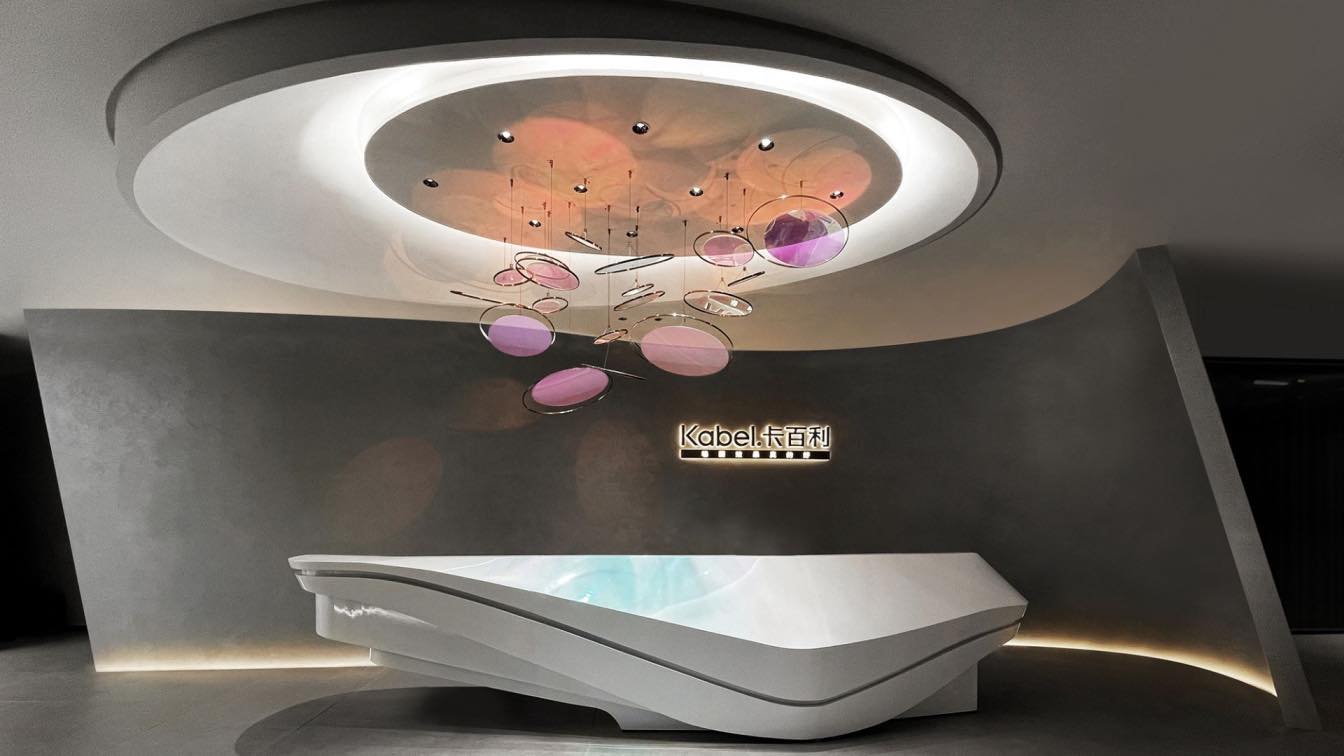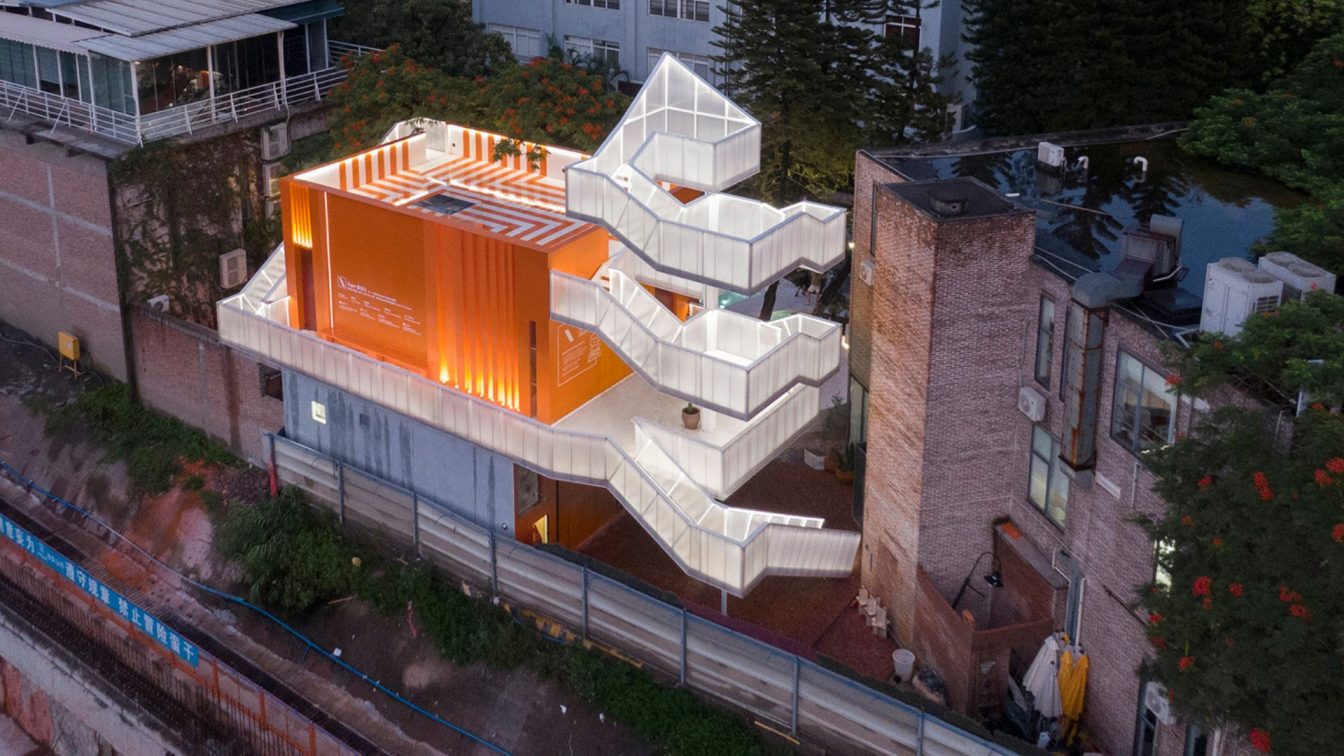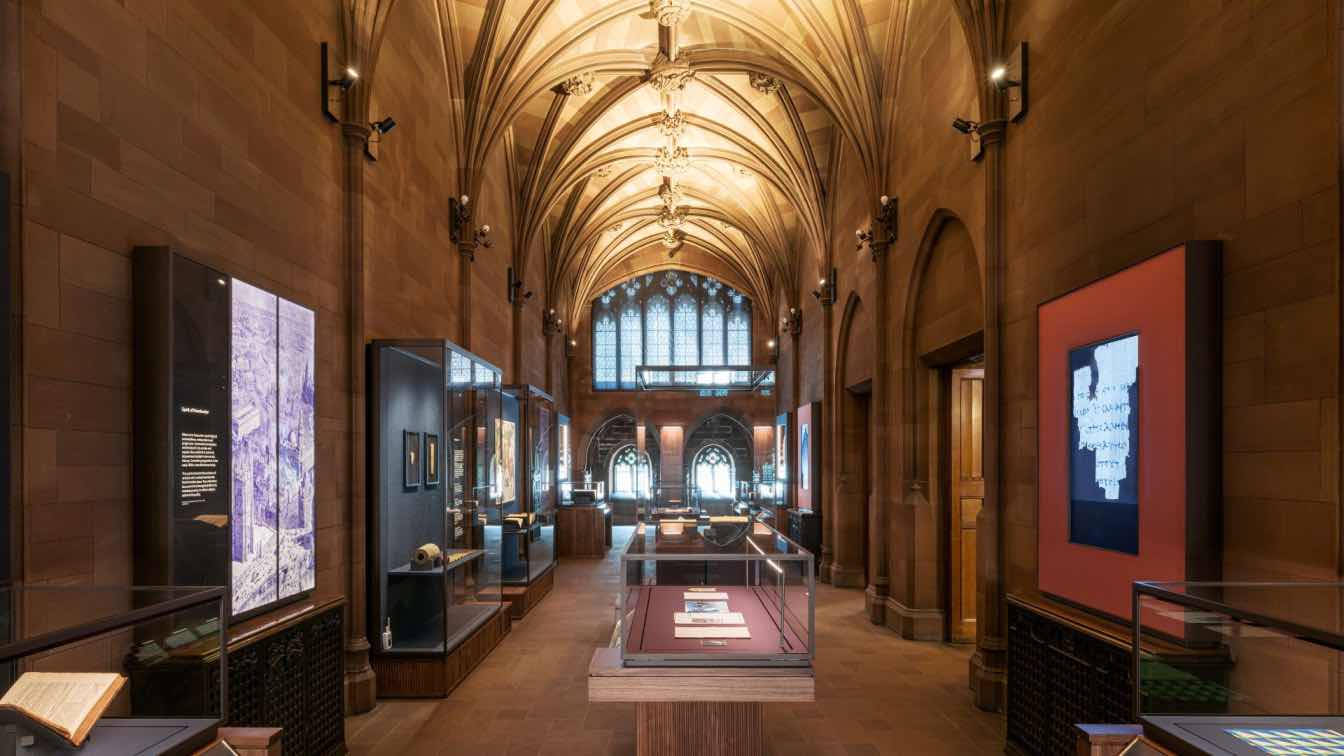Nissen Richards Studio has created the exhibition and graphic design for a groundbreaking new exhibit – ‘Unsilenced: Sexual Violence in Conflict’ - at IWM London. The exhibition, for which admission is only advised for those aged sixteen or over, is free to enter and will run until 2 November 2025. It is the first exhibition by a major museum in the UK to shine a light on this difficult subject matter and has been created with the aim of empowering survivors, informing visitors, and contributing towards meaningful change.
The exhibition content considers the contexts in which sexual violence occurs in conflict, exploring how propaganda shapes perceptions of gender and power to shine a light on this often-silenced issue. Incorporated - using testimony and over 160 objects, many never seen before - are the untold stories of child evacuees, victims of trafficking, prisoners of war, and survivors from the First World War to present-day conflicts, whilst the exhibition also highlights the ongoing efforts of those fighting for justice and working to prevent conflict-related sexual violence.
Design Language:
“Because of the distressing nature of the subject matter and testimonies in this exhibition, we sought above all to create a very calm and clear exhibition design language that would support visitors and respect the impact of the stories being told” Pippa Nissen, Director of Nissen Richards Studio, commented.
Graphic communication makes use of gauzy panels, suggesting transparency, set into rich timber frames, which talk of the weighty subject matter. The design language includes layering, which changes throughout the exhibition in terms of materiality, but which makes the build feel light and transparent. The layers also provide levels of complexity and subtlety in relation to the subject matter, allowing connections to be made. The exhibition design features a progression of colour from darker tones of blue to lighter, warmer and more neutral colours, expressing an emotional shift as the exhibition progresses.

The other major creative feature of the exhibition design language is the use of textiles and embroidery to add a softer, more human and tactile aspect to help set the tone of the exhibition. Nissen Richards Studio liaised with The London College of Fashion to select a current student to work with on this. The collaboration between the design team and student Yi-Ching Wang - who had done a master’s thesis on this subject – sees fabric and thread used in abstract ways in the place of traditional graphic panels, with the with the IWM’s interpretative text printed onto canvas and then sewn into a fabric surrounding the panel, where the beautiful sewn line work expresses each room’s theme. Whilst the lines used are linear for room one, for example, they become tense and agitated for room two and more organic in room three.
“This process allowed us to push the boundaries of interpretation to express ideas in more metaphorical ways” Pippa Nissen added. “The work created through this collaboration adds a directly emotional aspect to the exhibition that speaks of the power of free expression and repair, as well as war’s chaos and the unravelling of social norms.”
Themes:
The thematic structure of the exhibition includes an introductory AV space, followed by three main rooms whose themes are 1) Structures and Representations 2) Acts and Manifestations and 3) Justice and Reconciliation. Two further following spaces are the NGO room, looking at the work done by organisations caring for and working with the victims of sexual violence in conflict and a final contemplation and reflection room.
The exhibition’s thematic treatment, whilst representing only a fraction of a huge and complex subject, nonetheless investigates conflict across a wide time period, from the First and Second World Wars to The Gulf War, Bosnian War, Ukraine War, Iraq War, Balkans War, Sudan War and the Yazidi Genocide. Although the victims of sexual violence in conflict are overwhelmingly female, the exhibition also tells of male and child victims, looking not only at rape but at state-sanctioned sexual violence, humiliation and slavery within conflict contexts.

Helen Upcraft, Lead Curator of Unsilenced: Sexual Violence in Conflict, said: “Sexual violence is a devastating aspect of conflict and very difficult to talk about. This silence creates significant barriers to recovery, justice and lasting change. Survivors face immense challenges in sharing their stories, while the public lacks the knowledge or language to talk about these issues with confidence. By raising public awareness and deepening understanding of sexual violence in conflict, Unsilenced aims to inform visitors, empower survivors and contribute towards meaningful change in the fight against sexual violence in conflict.”
Finding 3D objects directly linked to the exhibition’s themes was not an easy task – forming part of the silence that has historically surrounded this subject - and so the exhibition features a mix of written and oral testimony, historic posters, photography, totemic objects and works of art. These include a painting by South African artist Albert Adams, photographs by Lee Miller and a miniature Sonyeosang (Statue of Peace) copied from a 2011 bronze by husband-and-wife sculptors Kim Seo-kyung and Kim Eun-sung.
Walk-through:
The introductory space features film footage by experts on the subject, created expressly for the exhibition by the IWM team. The experts include Christina Lamb, Chief Foreign Correspondent at The Sunday Times; Dr Paul Kirby, Reader in International Politics at Queen Mary University; Dr Zeynap Kaya, Lecturer in International Relations at the University of Sheffield; Sarah Sands, former Chair of the G7 Gender Equality Advisory Council and Charu Lata Hogg, Founder and Executive Director of All Survivors Project.

The first main room of the exhibition – Structures and Representation – contains a high-impact graphic display which explores gender stereotypes in war and makes clear that sexual violence does not happen in a vacuum, but relates directly to the representation and status of women in society and as depicted in wartime propaganda – which often shows women as either passive and in need of protection (women on the homefront) or over-sexualised and dangerous (women as seductress spies or carriers of STDs). For contrast, depictions of men in wartime are also displayed and are similarly extreme, with men depicted as either superheroic or, in the case of ‘enemy men’, as animalistic brutes.
Room two – Acts and Manifestation – carries the exhibition’s most explicit stories of sexual violence, including the rape of Belgian civilian women in World War One during the German invasion; the abuse of evacuees; sexual slavery enacted by ISIS; prostitution in wartime and the ‘comfort women corps’ set up by the Japanese government for its troops during World War Two. Albert Adams’ 2004 paintings of the abuse of male Iraqi prisoners in Abu Ghraib in this section is a reminder that sexual humiliation and abuse doesn’t only happen to women and can also be a tool used to demoralise and break the spirit of prisoners. This room, with its difficult storylines, also features gentle niches of space for visitors to stand and absorb information before moving on.
The third main thematic room is Justice and Reconciliation and talks of instances where justice has been achieved and ongoing legal challenges still taking place, including by children born out of sexual violence in Bosnia. The room also underlines how rarely justice has been achieved to date for the victims of sexual violence, with no one prosecuted, for example, despite horrendous evidence, at either the Tokyo or Nuremberg Tribunals.
Working with four key NGOs leading the fight against sexual violence in conflict, the penultimate space in the exhibition highlights their role in rebuilding communities: Women for Women International, All Survivors Project, Free Yezidi Foundation and Waging Peace. On display are photography by photojournalist Hazel Thompson highlighting the support Women for Women International gives to women survivors of war to rebuild their lives; a traditional cloth toub titled ‘Peace by Piece’, created by Sudanese women affected by the war in collaboration with Waging Peace; policy and testimony from All Survivors Project, the only international NGO dedicated to addressing acts of sexual violence in conflict against men and boys; and a handmade animal toy created by women through Free Yezidi Foundation’s programme to empower women through training, job opportunities and income generation. Finally, the ‘Outro’ space is a further AV area for contemplation, featuring some of the main speakers from the intro space.



























About
Nissen Richards Studio is a triple RIBA National Award-winning architects’ practice and exhibition design studio, working with many of the world’s greatest cultural institutions, from The Imperial War Museum, The Courtauld Gallery, The National Portrait Gallery, The British Museum, British Library, National History Museum, National Trust, The Wallace Collection, Wordsworth Trust and HRP in the UK to Kode, MUNCH and the National Library and National Gallery of Norway internationally.
Founded in 2010 and led by Directors Pippa Nissen and Jim Richards, Nissen Richards Studio’s approach combines a respect for all the voices in a project, a willingness to experiment, a unique storyboarding process and a fusion of architectural and theatre design processes.
About IWM: IWM (Imperial War Museums) tells the story of people who have lived, fought and died in conflicts involving Britain and the Commonwealth since the First World War.
Our unique collections, made up of the everyday and the exceptional, reveal stories of people, places, ideas and events. Using these, we tell vivid personal stories and create powerful physical experiences across our five museums that reflect the realities of war as both a destructive and creative force. We challenge people to look at conflict from different perspectives, enriching their understanding of the causes, course and consequences of war and its impact on people’s lives.
IWM’s five branches which attract over 1 million visitors each year are IWM London, which has recently transformed with new, permanent and free Second World War Galleries, The Holocaust Galleries and the Blavatnik Art, Film and Photography Galleries; IWM North, housed in an iconic award-winning building designed by Daniel Libeskind; IWM Duxford, Britain's best preserved wartime airfield; Churchill War Rooms, housed in Churchill’s secret headquarters below Whitehall; and the Second World War cruiser HMS Belfast.





